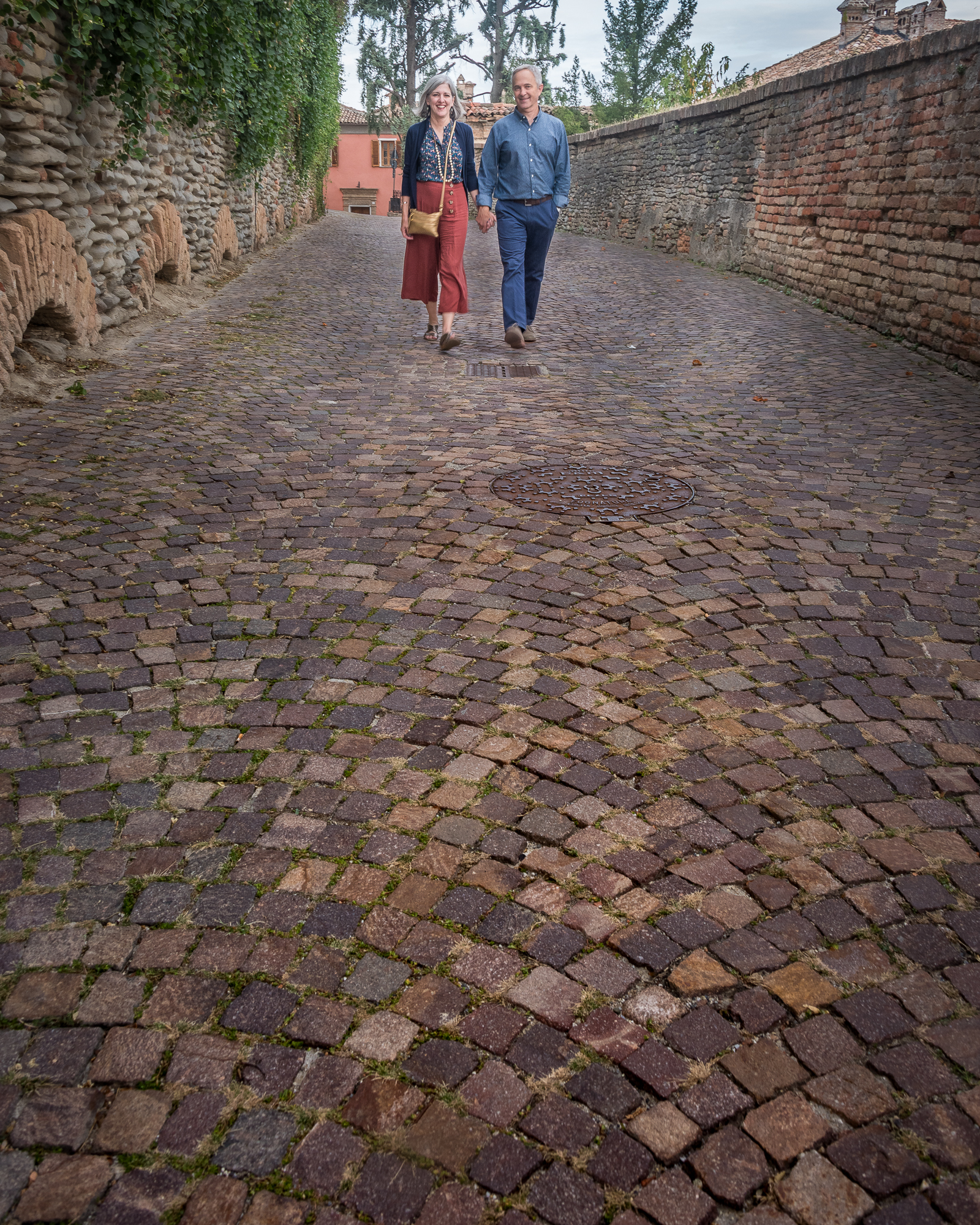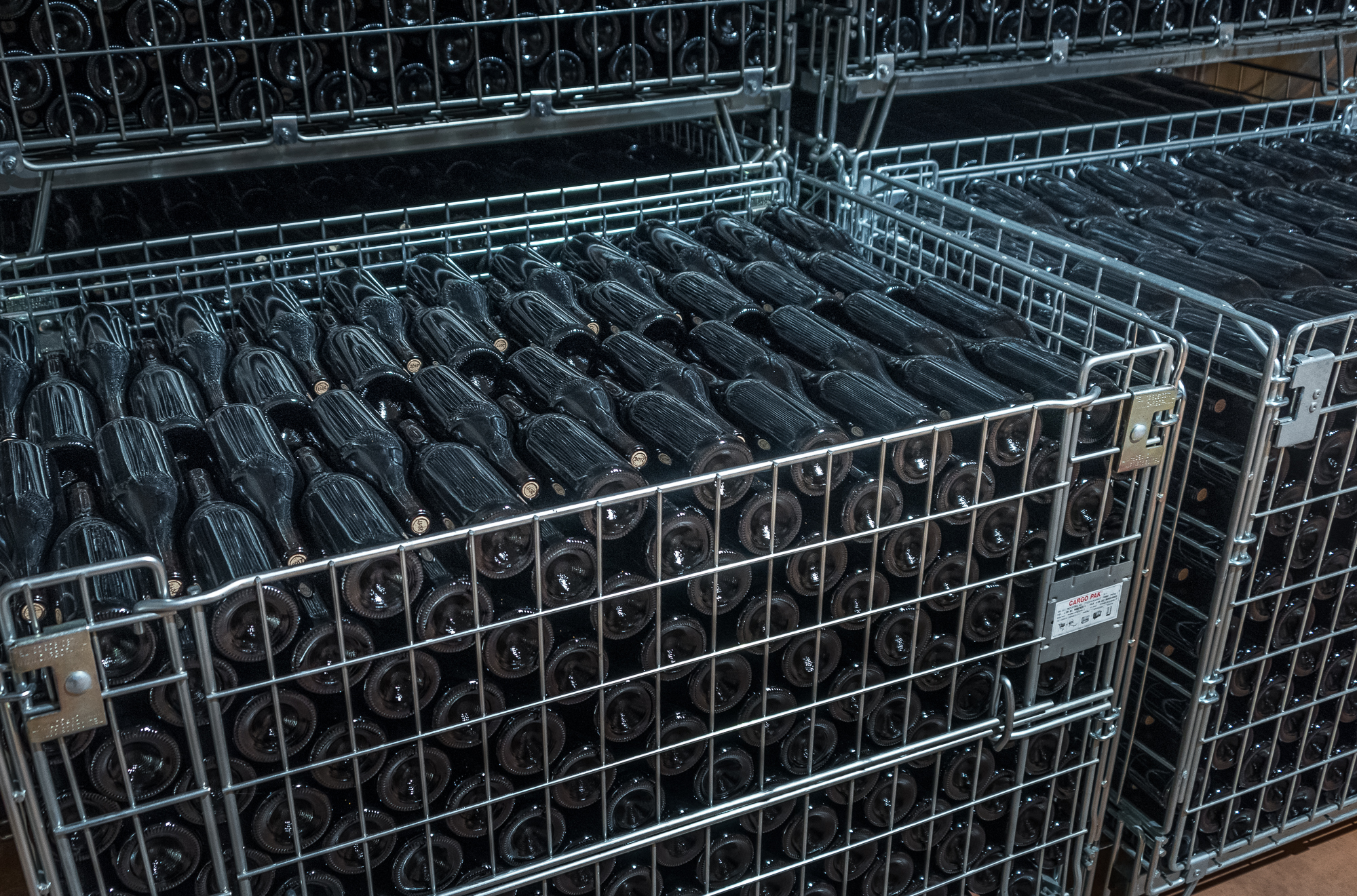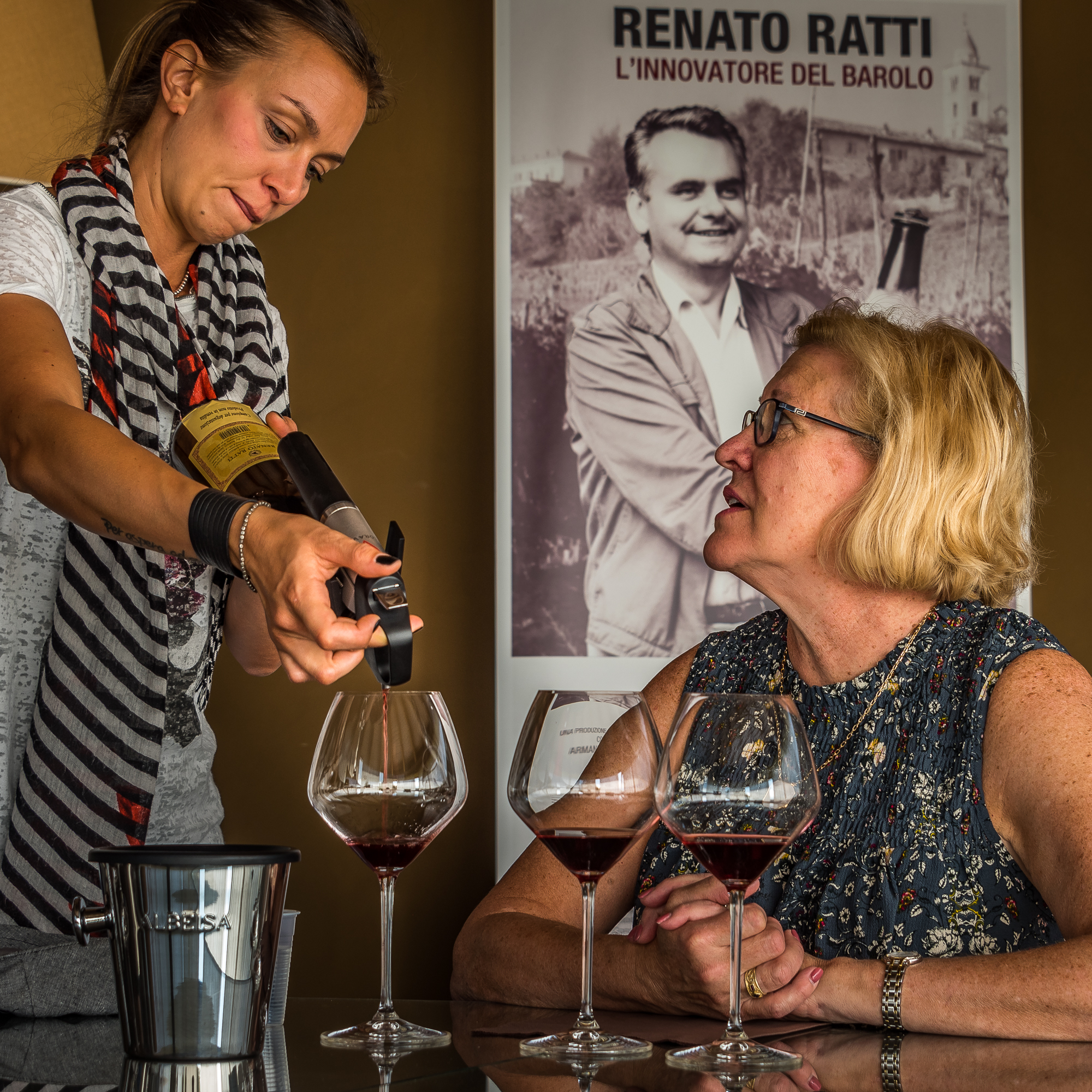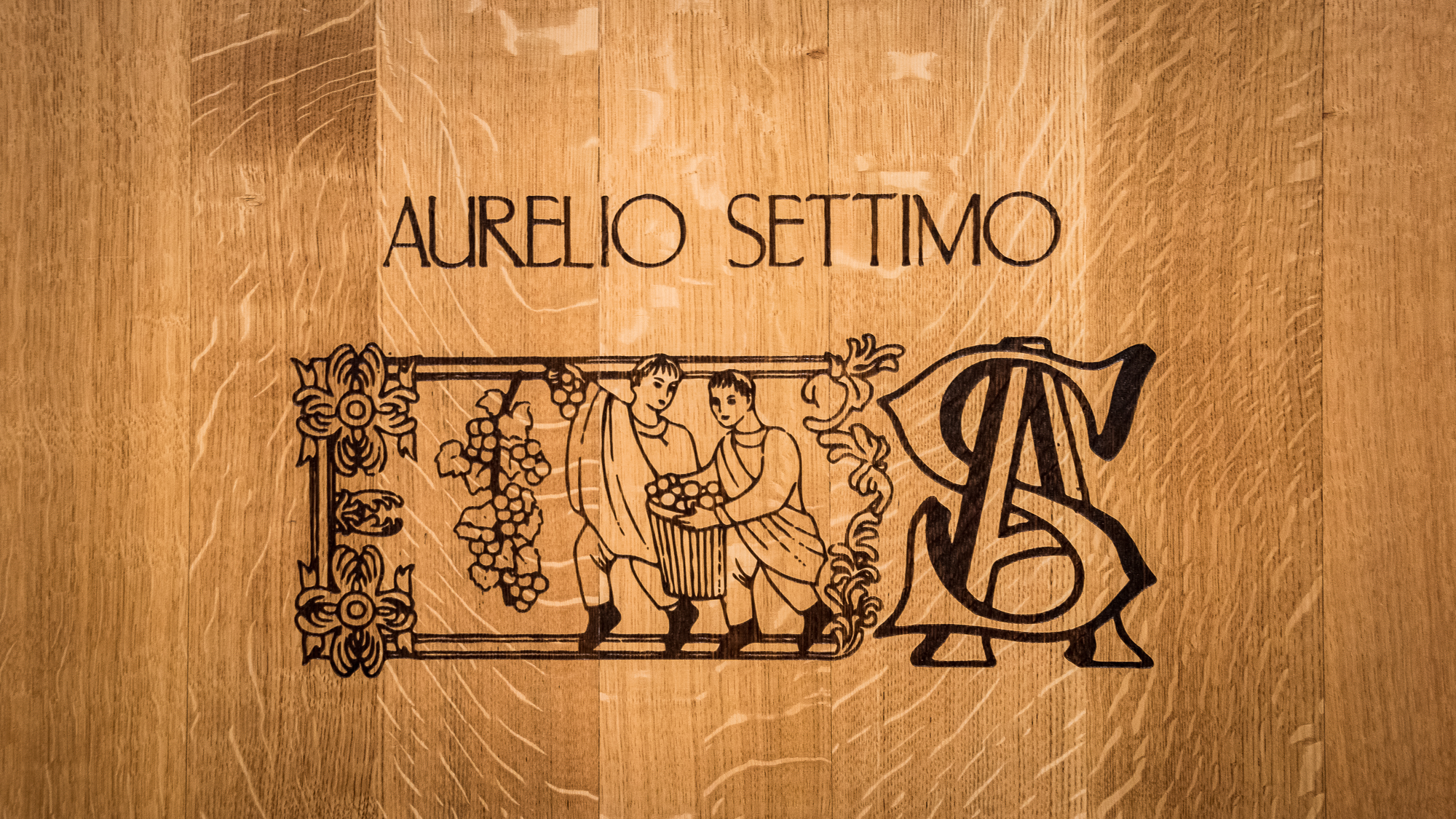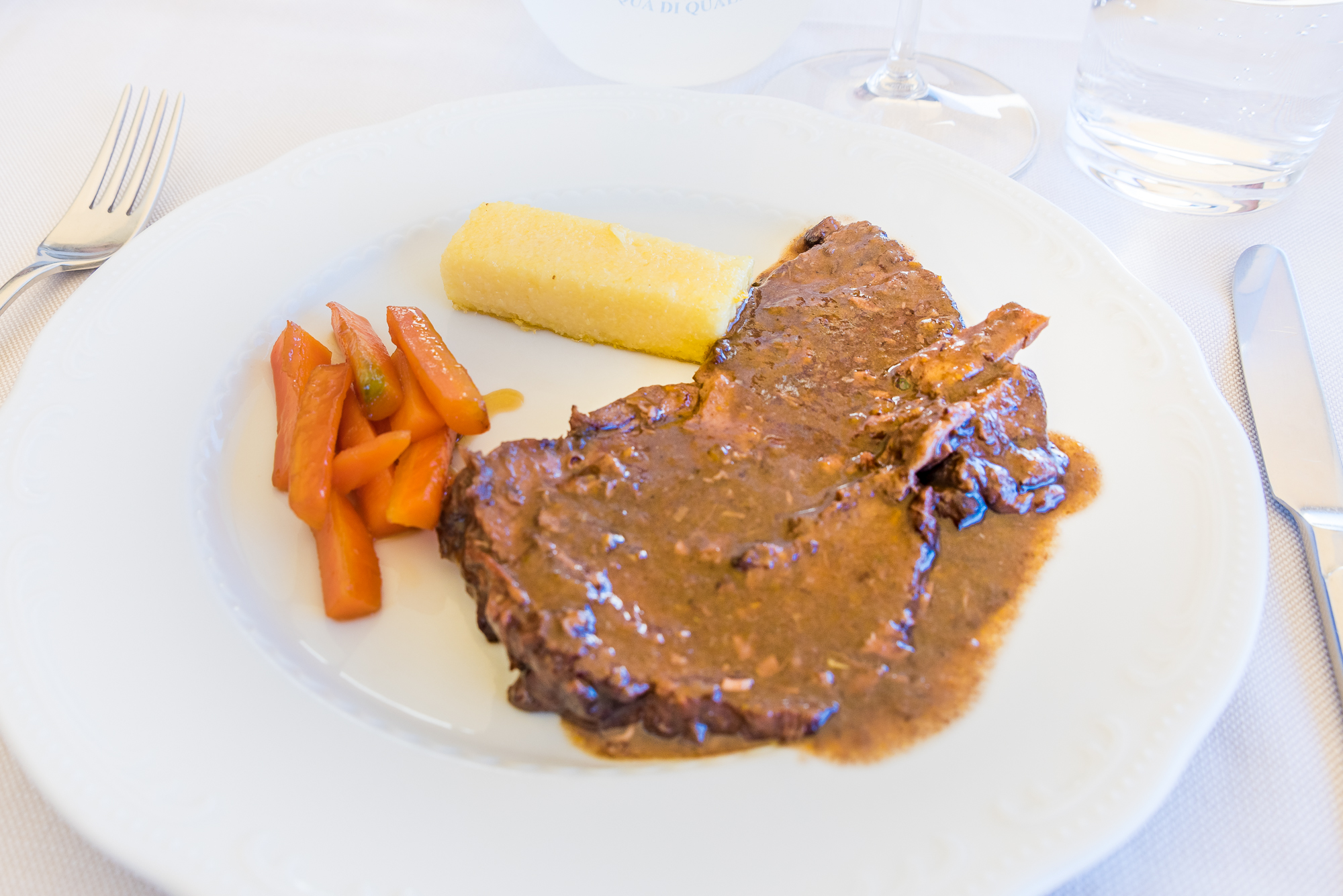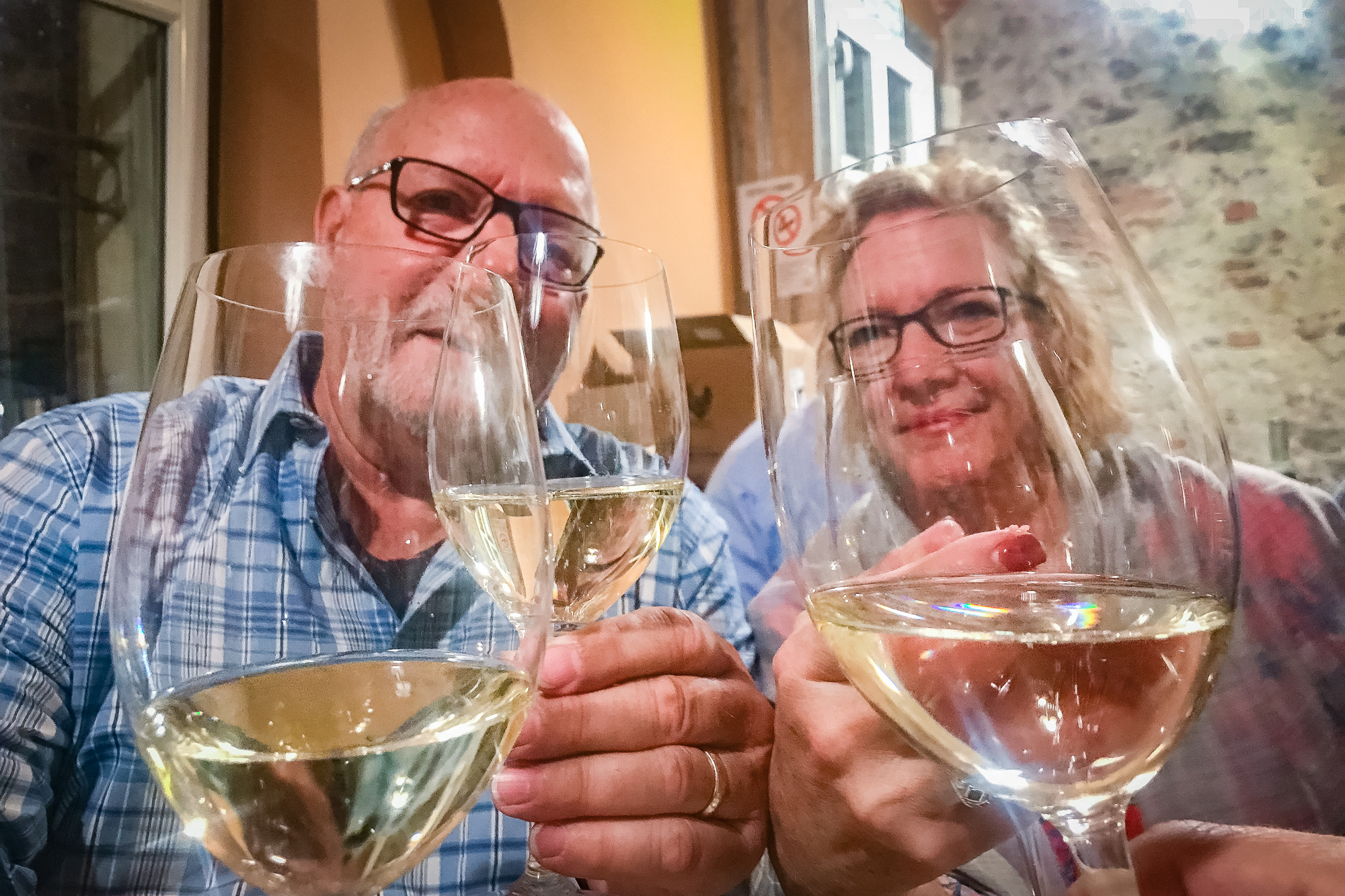You’ve heard of the term, “A Diamond in the Rough”, which refers to something special surrounded by something not so special. I was going to suggest that for a subtitle for this article, but it just doesn’t work. The Ristorante Donna Selvatica is surely a diamond, but it doesn’t sit in a rough…it sits in a charming hillside town called Neive.
So, let’s say that Donna Selvatica is a diamond on a golden crown, instead.
We happened upon this place within a place after a long afternoon of wining at Michele Chiarlo’s Le Orme vineyards and Calamandrana winery…I know, someone has to do it, so we gave of ourselves for each of you. And, you’re welcome.
“The folks of Neive finally had something to be proud of when their last homegrown countess, Countess Maria Vittoria, became Queen of Spain”
As just mentioned, we spent the afternoon touring the Michele Chiarlo vineyards, winery, and tasting room (more on that in a future article). It was early evening as we headed west to our lodgings at Villa Gremi. We had not researched, or even thought about, dinner because we were so intrigued with our afternoon activities. So wife Ellen took to Google as we headed west and suddenly shouted out, “Turn right at the next road!”. Being well trained, I turned right at the next road. This road led to heretofore unheard of Neive. Having interpreted the command to, “Park right here!” to mean park right here, I parked. Who says I never listen?!
Walking the cobblestone and brick-paved streets of Neive soon led us to Ristorante Donna Selvatica. As we arrived well before the opening hour of 19:00 (aka 7:00pm), we made a reservation for patio dining and we explored Neive, as described a bit further in this article.
We really liked this restaurant…the location, the view, the ambiance, the service, the wine, the food…everything.
The location is pretty much in the center of Neive, as can be seen in the aerial view a bit further down the page.
But the view…magnificent. The rolling, vine-covered hills go on and on, with the small town of Barbaresco sitting mid-distance.
This closeup view from our table provides detail of the famous Barbaresco Tower, and an elevator ride to its top continues those magnificent views.
For our nightly…daily…frequent…toast, we chose a white wine called Arneis. We had never heard of Arneis until our afternoon tour at Michele Chiarlo, which happens to also produce this crisp, minerally-yet-light wine. The grapes are grown in the Roero area of Piemonte. It is now our favorite white wine of Italy.
Those are in-laws Craig and Leslie Johnson toasting on the patio.
The homemade ravioli pasta with mountain butter and 36-month aged Parmigiano Reggiano is poised and ready to be eaten.
Might this be a mix of potato gnocchi pasta on Castelmagno-cheese cream, and sliced Castelmagno cheese with honeydew honey, jams and Langa Bio hazelnuts? Yes, I believe so. It’s like eating a cheese-covered cloud.
At this point I was in a food coma of some sort, so I don’t remember exactly what this dish is. But, it appears to be duck fixed a couple of ways — one of which is wrapped in pancetta. I’ll find out exactly what it was next time I’m there.
You know how sometimes you don’t have room to order dessert, but they bring you some anyway? I think that’s what this is.
If you are a grappa fan, and I’m thinking that one-in-a-hundred of you might be, they have dozens from which to choose.
Here you can click to see an actual Italian/English menu from Donna Selvatica >>>
But before we depart, I need to tell you what ‘Donna Selvatica’ translates to in English. That would be ‘Wild Woman’. You don’t have to be/take a wild woman to this restaurant; however, Craig and I found that it helps. We love our own wild women!
The Town of Neive
While waiting to eat at Donna Selvatica, we explored to tiny town of Neive.
Like many of the small hill towns of the Piemonte, this one sits on a hill — naturally. The hill upon which it sits is about 4 miles northeast of Alba, which is one of the towns-of-considerable-size in the Piemonte.
Neive is a very small town. This photo shows its extent. Ristorante Donna Selvatica is within the red oval.
Today, things are quiet in Neive, but it hasn’t always been that way. Witness the fate of the nice Castle of Neive that used to stand here proud. The Neivesi had a hard time of it in 1274 because both the communes of Alba and Asti wanted that little hill-top town as their own. The Albesi and Astigiani met for battle, and since neither could pull off the heist of the town, it seems that one or both of them destroyed the Castle of Neive in spite. But did they have to take it out on the nice folks of Neive?!
Then, in the next century they were totally embarrassed when Giangaleazzo Visconti’s daughter Valentina married the Duke of Orleans and the town was given up by her father as her dowry. And I thought an envelope with cash and some jewels were customary.
A couple of centuries later Neive went to the House of Savoy, and then to the French for 17 years before being returned to the House of Savoy. In 1618, Neive became a fief assigned to Count Vittorio Amedeo Dal Pozzo, who assumed the title of First Count of Neive. The folks of Neive finally had something to be proud of when their last homegrown countess, Countess Maria Vittoria became Queen of Spain.
I’m guessing that after all of that, they would just like to be left alone. But go anyway, because in addition to Donna Selvatica there is a particularly nice little shop there.
Fili di Fantasia translated to English is Fantasy Threads.
We were really surprised to find this nice shop of things with threads open at a late hour — and frankly that it existed at all on its itsy-bitsy street.
Wife Ellen and Sis-in-law Leslie were quite pleased with this little shop.
And, I was quite pleased with the view from the back balcony.
And yes, purchases were made.
Strolling Neive
We found the brick pavers to be a bit easier on the feet than the cobbles, but either are more charming than the typical asphalt pavement.
The church of Saints Peter and Paul existed in the 12th century, but was rebuilt to its present form in the 18th century. I was fortunate to capture in a gorgeous evening light.
The inside of the church is very peaceful with numerous artworks.
Here you see a typical home and garden. Note the soil. It is calcareous and is just what the enologist ordered for the growing of grape vines.
One would think its not so great for vegetable gardens, though.
Love the Italian roof tiles!
Wish I had them on my villa.
Wish I had a villa.
Wish I was even near a villa!
Though these people are not enjoying a meal at Donna Salvatica, they do look to be having a good time.
As we closed out our evening in Neive, we were treated to the lights of the surrounding hill-top towns, with Barbaresco prominently featured in the foreground.
We fondly remember our afternoon in Neive and our evening dinner at Ristorante Donna Selvatica. If you are in the area, I would recommend that you follow my wife’s advice and, “Turn right at the next road!”…you will not be disappointed…unless you are coming from the other direction, of course.
If we happen to be at Donna Selvatica at the same time one evening, I’ll gladly let you purchase the first bottle of Arneis…I’ll get the second.
Ciao for now,
Steve



